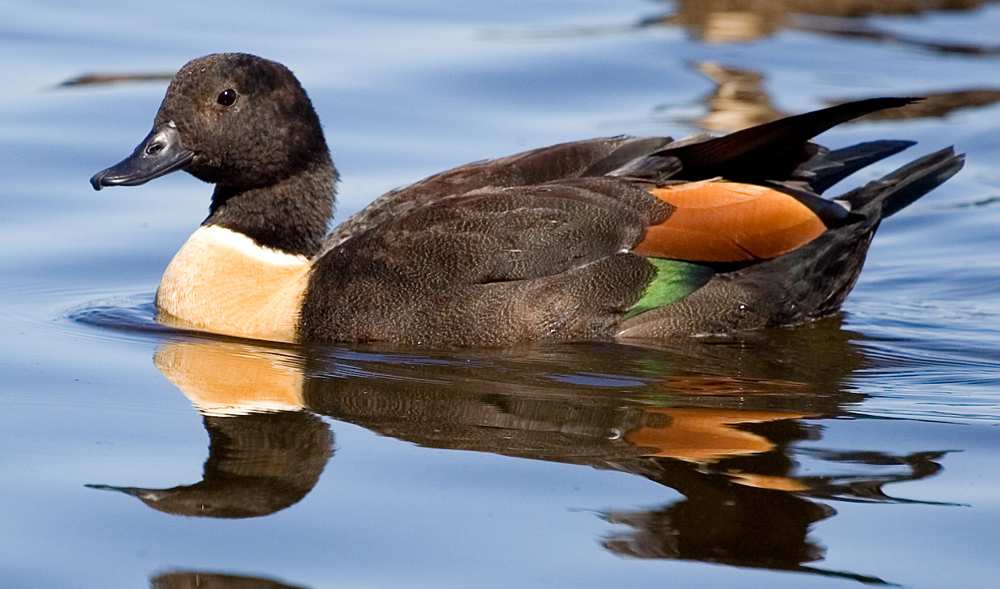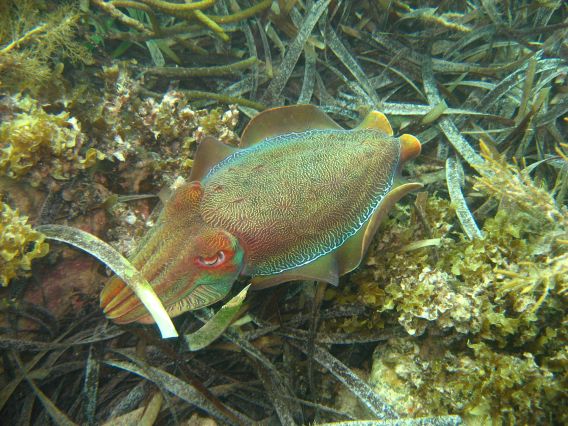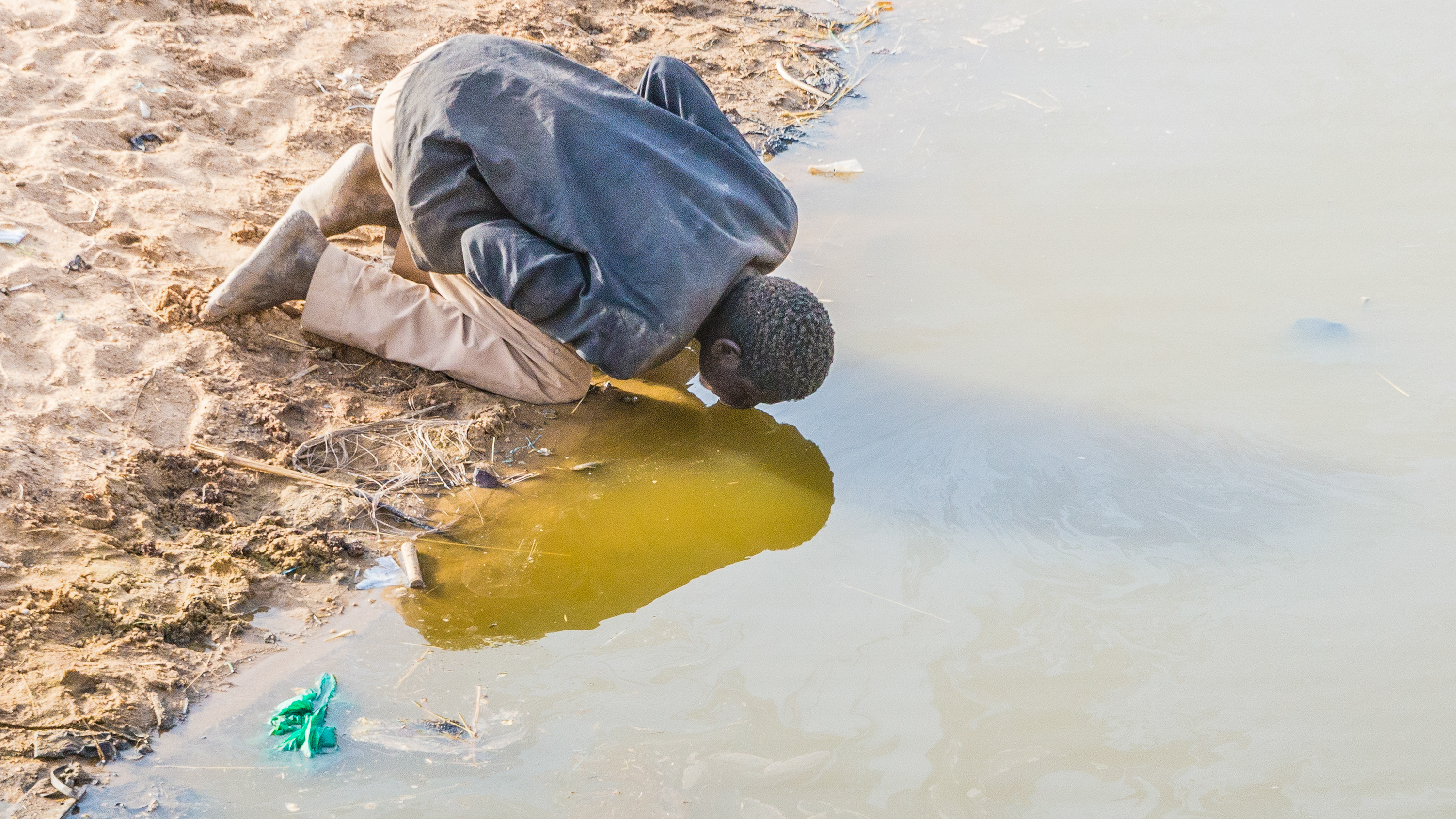|
Murray Mouth
Murray Mouth is the point at which the River Murray meets the Southern Ocean. The Murray Mouth's location is changeable. Historical records show that the channel out to sea moves along the sand dunes over time. At times of greater river flow and rough seas, the two bodies of water would erode the sand dunes to create a new channel leaving the old one to silt and disappear. Description The mouth of the Murray River is about south east of Goolwa and about south-south-east of the Adelaide city centre in the gazetted localities of Coorong and Goolwa South. The mouth is an opening in the coastal dune system which separates the river system from the ocean and which extends from near Goolwa in a south-easterly direction along the continental coastline for about . The mouth divides the dune system into two peninsulas. The peninsula on the west side is Sir Richard Peninsula which terminates at the mouth with a point named Pullen Spit. The peninsula on the east side is Younghus ... [...More Info...] [...Related Items...] OR: [Wikipedia] [Google] [Baidu] |
Coorong And Lakes Alexandrina And Albert Wetland
Lake Alexandrina is a coastal freshwater lake located between the Fleurieu and Kangaroo Island and Murray and Mallee regions of South Australia, about south-east of Adelaide. The lake adjoins the smaller Lake Albert (together known as the Lower Lakes) and a coastal lagoon called The Coorong to its southeast, before draining into the Great Australian Bight via a short, narrow opening known as Murray Mouth. Nomenclature Aboriginal naming Aboriginal people having an association with the lake were reported as knowing it by such names as ''Mungkuli,'' ''Parnka'' and ''Kayinga.'' European naming English settlers named the lake after Princess Alexandrina, niece and successor of King William IV of Great Britain and Ireland. When the princess ascended the throne and took the name Queen Victoria, there was some talk of changing the name of the lake to Lake Victoria, but the idea was dropped. Description Lake Alexandrina is located north of Encounter Bay and east of Fleurieu Peninsu ... [...More Info...] [...Related Items...] OR: [Wikipedia] [Google] [Baidu] |
Hindmarsh Island
Hindmarsh Island (Ngarrindjeri: Kumerangk) is an inland river island located in the lower Murray River near the town of Goolwa, South Australia, Goolwa, South Australia. The island is a tourist destination, which has increased in popularity since the opening of the Hindmarsh Island bridge in 2001. Hindmarsh Island is south east of the Adelaide city centre, around a 1-hour and 15 minute drive. History Prior to European colonisation, the island was occupied by Ngarrindjeri peoples, many who were forcibly removed to Raukkan. 1830: The first European to set foot on Hindmarsh Island was Captain Charles Sturt. Sturt used the Island as a viewing point and from there he sighted the Murray Mouth. 1831: Captain Collet Barker surveyed the Murray Mouth but was killed by Indigenous Australians after swimming across the mouth. 1837: The island was named by Captain John William Dundas Blenkinsop after South Australia's first Governor of South Australia, Governor, Sir John Hindmarsh. ... [...More Info...] [...Related Items...] OR: [Wikipedia] [Google] [Baidu] |
Spencer Gulf
The Spencer Gulf is the westernmost and larger of two large inlets (the other being Gulf St Vincent) on the southern coast of Australia, in the state of South Australia, facing the Great Australian Bight. It spans from the Cape Catastrophe and Eyre Peninsula in the west to Cape Spencer and Yorke Peninsula in the east. The largest towns on the gulf are Port Lincoln, Whyalla, Port Pirie, and Port Augusta. Smaller towns on the gulf include Tumby Bay, Port Neill, Arno Bay, Cowell, Port Germein, Port Broughton, Wallaroo, Port Hughes, Port Victoria, Port Rickaby, Point Turton, and Corny Point. History The first recorded exploration of the gulf was that of Matthew Flinders in February 1802. Flinders navigated inland from the present location of Port Augusta to within of the termination of the water body. The gulf was named ''Spencer's Gulph'' by Flinders on 20 March 1802, after George John Spencer, the 2nd Earl Spencer. The Baudin expedition visited the gulf after Flind ... [...More Info...] [...Related Items...] OR: [Wikipedia] [Google] [Baidu] |
Birdlife International
BirdLife International is a global partnership of non-governmental organizations that strives to conserve birds and their habitats. BirdLife International's priorities include preventing extinction of bird species, identifying and safeguarding important sites for birds, maintaining and restoring key bird habitats, and empowering conservationists worldwide. It has a membership of more than 2.5 million people across 116 country partner organizations, including the Royal Society for the Protection of Birds, the Wild Bird Society of Japan, the National Audubon Society and American Bird Conservancy. BirdLife International has identified 13,000 Important Bird and Biodiversity Areas and is the official International Union for Conservation of Nature’s Red List authority for birds. As of 2015, BirdLife International has established that 1,375 bird species (13% of the total) are threatened with extinction ( critically endangered, endangered or vulnerable). BirdLife International p ... [...More Info...] [...Related Items...] OR: [Wikipedia] [Google] [Baidu] |
Coorong Important Bird Area
Coorong National Park is a protected area located in South Australia about south-east of Adelaide, that predominantly covers a coastal lagoon ecosystem officially known as The Coorong and the Younghusband Peninsula on the Coorong's southern side. The western end of the Coorong lagoon is at the Murray Mouth near Hindmarsh Island and the Sir Richard Peninsula, and it extends about south-eastwards. Road access is from Meningie. The beach on the coastal side of the peninsula, the longest in Australia, is also commonly called The Coorong. The Coorong lies within the traditional lands of the Ngarrindjeri people, an Aboriginal Australian group. Notable locations within the park include Salt Creek, Policeman's Point, Jack Point, and Woods Well. Etymology Its name is thought to be a corruption of the Ngarrindjeri word ''kurangk'', also written ''Kurangh'', meaning a long or narrow lagoon or neck History The Coorong National Park was proclaimed on 9 November 1967 und ... [...More Info...] [...Related Items...] OR: [Wikipedia] [Google] [Baidu] |
Coorong National Park
Coorong National Park is a protected area located in South Australia about south-east of Adelaide, that predominantly covers a coastal lagoon ecosystem officially known as The Coorong and the Younghusband Peninsula on the Coorong's southern side. The western end of the Coorong lagoon is at the Murray Mouth near Hindmarsh Island and the Sir Richard Peninsula, and it extends about south-eastwards. Road access is from Meningie. The beach on the coastal side of the peninsula, the longest in Australia, is also commonly called The Coorong. The Coorong lies within the traditional lands of the Ngarrindjeri people, an Aboriginal Australian group. Notable locations within the park include Salt Creek, Policeman's Point, Jack Point, and Woods Well. Etymology Its name is thought to be a corruption of the Ngarrindjeri word ''kurangk'', also written ''Kurangh'', meaning a long or narrow lagoon or neck History The Coorong National Park was proclaimed on 9 November 1967 under the ''N ... [...More Info...] [...Related Items...] OR: [Wikipedia] [Google] [Baidu] |
Encounter Marine Park
Encounter Marine Park is a marine park in South Australia. It is in the Fleurieu Peninsula in state of South Australia South Australia (commonly abbreviated as SA) is a state in the southern central part of Australia. It covers some of the most arid parts of the country. With a total land area of , it is the fourth-largest of Australia's states and territories ..., close to Adelaide. The land around Encounter Marine Park is mostly hilly, but its immediate surroundings are different. The nearest reasonably sized town is Delamere, 13.1 km north. In the region around Encounter Marine Park, coves, and bays are very common. The climate of the marine park is cool with an average temperature of 17°C. The warmest month is December, at 24° C, and the coldest July, at 6°C. The average rainfall is 863 millimetres per year. The wettest month is June, with 172 millimetres of rain, and the driest January, with 24 mm. The park is popular for whale watching and also home to the site of ... [...More Info...] [...Related Items...] OR: [Wikipedia] [Google] [Baidu] |
Ramsar Site
A Ramsar site is a wetland site designated to be of international importance under the Ramsar Convention,8 ha (O) *** Permanent 8 ha (P) *** Seasonal Intermittent < 8 ha(Ts) ** es on inorganic soils: *** Permanent (herb dominated) (Tp) *** Permanent / Seasonal / Intermittent (shrub dominated)(W) *** Permanent / Seasonal / Intermittent (tree dominated) (Xf) *** Seasonal/intermittent (herb dominated) (Ts) ** Marshes on soils: *** Permanent (non-forested)(U) *** Permanent (forested)(Xp) ** Marshes on inorganic or peat soils: *** Marshes on inorganic or peat soils / High altitude (alpine) (Va) *** Marshes on inorganic or peat soils / Tundra (Vt) * Saline, |
Water Stagnation
Water stagnation occurs when water stops flowing. Stagnant water can be a major environmental hazard. Dangers Malaria and dengue are among the main dangers of stagnant water, which can become a breeding ground for the mosquitoes that transmit these diseases. Stagnant water can be dangerous for drinking because it provides a better incubator than running water for many kinds of bacteria and parasites. Stagnant water can be contaminated with human and animal feces, particularly in deserts or other areas of low rainfall. Water stagnation for as little as six days can completely change bacterial community composition and increase cell count. Stagnant water may be classified into the following basic, although overlapping, types: * Water body stagnation (stagnation in swamp, lake, lagoon, river, etc.) * Surface and ground waters stagnation * Trapped water stagnation. The water may be trapped in human artifacts (discarded cans, plant pots, tires, dug-outs, roofs, etc.), as well a ... [...More Info...] [...Related Items...] OR: [Wikipedia] [Google] [Baidu] |
Dredging
Dredging is the excavation of material from a water environment. Possible reasons for dredging include improving existing water features; reshaping land and water features to alter drainage, navigability, and commercial use; constructing dams, dikes, and other controls for streams and shorelines; and recovering valuable mineral deposits or marine life having commercial value. In all but a few situations the excavation is undertaken by a specialist floating plant, known as a dredger. Dredging is carried out in many different locations and for many different purposes, but the main objectives are usually to recover material of value or use, or to create a greater depth of water. Dredges have been classified as suction or mechanical. Dredging has significant environmental impacts: it can disturb marine sediments, leading to both short- and long-term water pollution, destroy important seabed ecosystems, and can release human-sourced toxins captured in the sediment. Description ... [...More Info...] [...Related Items...] OR: [Wikipedia] [Google] [Baidu] |
Pipeline Transport
Pipeline transport is the long-distance transportation of a liquid or gas through a system of pipes—a pipeline—typically to a market area for consumption. The latest data from 2014 gives a total of slightly less than of pipeline in 120 countries of the world. The United States had 65%, Russia had 8%, and Canada had 3%, thus 76% of all pipeline were in these three countries. ''Pipeline and Gas Journals worldwide survey figures indicate that of pipelines are planned and under construction. Of these, represent projects in the planning and design phase; reflect pipelines in various stages of construction. Liquids and gases are transported in pipelines, and any chemically stable substance can be sent through a pipeline. Pipelines exist for the transport of crude and refined petroleum, fuels – such as oil, natural gas and biofuels – and other fluids including sewage, slurry, water, beer, hot water or steam for shorter distances. Pipelines are useful for transporting water ... [...More Info...] [...Related Items...] OR: [Wikipedia] [Google] [Baidu] |
Irrigation
Irrigation (also referred to as watering) is the practice of applying controlled amounts of water to land to help grow Crop, crops, Landscape plant, landscape plants, and Lawn, lawns. Irrigation has been a key aspect of agriculture for over 5,000 years and has been developed by many cultures around the world. Irrigation helps to grow crops, maintain landscapes, and revegetation, revegetate disturbed soils in dry areas and during times of below-average rainfall. In addition to these uses, irrigation is also employed to protect crops from frost, suppress weed growth in grain fields, and prevent soil consolidation. It is also used to cool livestock, reduce dust, dispose of sewage, and support mining operations. Drainage, which involves the removal of surface and sub-surface water from a given location, is often studied in conjunction with irrigation. There are several methods of irrigation that differ in how water is supplied to plants. Surface irrigation, also known as gravity irri ... [...More Info...] [...Related Items...] OR: [Wikipedia] [Google] [Baidu] |








.png)

